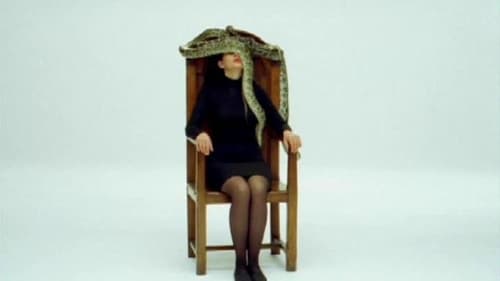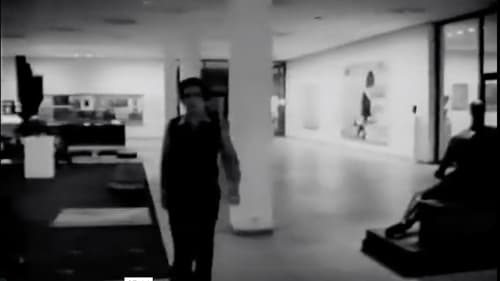Ulay
Рождение : 1943-11-30, Solingen, Germany
История
Ulay, born Frank Uwe Laysiepen, 1943 is a German artist, actor, and photographer, now based in Amsterdam, Holland, and Ljubljana, Slovenia. Ulay received international recognition for his work as a photographer, mainly in Polaroid, from the late 1960s, and later as a performance artist, including his collaborative performances with Marina Abramovic from 1976 to 1988.

Thanks
Thirty years after their separation, performance artists Marina Abramović and Frank Uwe 'Ulay' Laysiepen (1943-2020) agree to meet, for the first time on camera, for a raw and honest conversation about their life, art and legacy.

In Memory Of
Thirty years after their separation, performance artists Marina Abramović and Frank Uwe 'Ulay' Laysiepen (1943-2020) agree to meet, for the first time on camera, for a raw and honest conversation about their life, art and legacy.

Self - Artist
Thirty years after their separation, performance artists Marina Abramović and Frank Uwe 'Ulay' Laysiepen (1943-2020) agree to meet, for the first time on camera, for a raw and honest conversation about their life, art and legacy.

Story
The story of one of the most radical performances in art history told by German artist Ulay, who in 1976 decided to steal Hitler's favorite painting from Berlin's national museum and hang it in the home of a Turkish immigrant family. "This particular painting you could say was a German identity icon." In 1976 Ulay decided to steal the painting 'Der arme Poet' (The Poor Poet) (1839) by Carl Spitzweg, which was said to be Hitler's favorite painting. By stealing the painting from the Neue Nationalgalerie (New National Gallery) in Berlin, Ulay broke away from what he had done previously, aiming "to give a strong signal about what I was about as an artist at the time."

The artist
The story of one of the most radical performances in art history told by German artist Ulay, who in 1976 decided to steal Hitler's favorite painting from Berlin's national museum and hang it in the home of a Turkish immigrant family. "This particular painting you could say was a German identity icon." In 1976 Ulay decided to steal the painting 'Der arme Poet' (The Poor Poet) (1839) by Carl Spitzweg, which was said to be Hitler's favorite painting. By stealing the painting from the Neue Nationalgalerie (New National Gallery) in Berlin, Ulay broke away from what he had done previously, aiming "to give a strong signal about what I was about as an artist at the time."

Legendary couple in performance art – Marina Abramović and Ulay – lived together for 12 years and made pioneering work as a duo. In this extraordinary double interview the artists looks back on their relationship – from their first meeting in 1975 until now.

Himself
Ulay is a conceptual artist whose photography pushed boundaries, and whose love affair with Marina Abramovic produced some of the best pieces of performance art. Diagnosed with cancer shortly after agreeing to film the documentary, Ulay's illness informs Project Cancer, which is part-retrospective, part-visual document of the year he believed could be the last of his extraordinary life.

Self
Югославская художница Марина Абрамович называет себя «бабушкой перформанса». И у нее есть на то все основания. Сегодня в этом виде актуального искусства ей, пожалуй, нет равных, а впервые она обратила на себя внимание арт-сообщества еще в 1974 году. Документальный фильм Мэттью Эйкерса рассказывает о подготовке Марины к своей ретроспективной выставке в Музее современного искусства в Нью-Йорке (ставшей крупнейшим перформансом в истории MoMA). Ее посетители смогли не только увидеть, но и лично поучаствовать в реконструкциях самых знаковых и провокативных перформансов художницы, один из которых длился 736,5 часов (каждый желающий мог смотреть прямо в глаза Абрамович 30 минут, что приводило к самым непредсказуемым последствиям). Мало кто сможет повторить то, на что способна Марина. Но те, кому это удастся, поймут, что значит не только «присутствовать», но и «быть» здесь и сейчас.

El camino entre dos puntos (The way between two points) investigates Patagonia’s tainted nature. Here, where throughout the 20th century ever enhanced methods of oil recovery, have transformed an amorphous, ambivalent and hardly populated landscape into an uncanny site of man’s supposed mastery of nature, the film traces the ways of a man, who wanders the scenes aimlessly, bound by his own implication in the menacing mechanics of oil production but drawn physically to their coevally proceeding erasure by the rough and untamed nature of this seemingly self-subsisting land.

Writer
El camino entre dos puntos (The way between two points) investigates Patagonia’s tainted nature. Here, where throughout the 20th century ever enhanced methods of oil recovery, have transformed an amorphous, ambivalent and hardly populated landscape into an uncanny site of man’s supposed mastery of nature, the film traces the ways of a man, who wanders the scenes aimlessly, bound by his own implication in the menacing mechanics of oil production but drawn physically to their coevally proceeding erasure by the rough and untamed nature of this seemingly self-subsisting land.

Himself
Пьер Кулибёф снимает одновременно и автобиографию, и историю перформансов Марины Абрáмович, которая воссоздаёт свои художественные произведения перед камерой. Биография становится арт-историей, арт-история становится биографией. Начиная от рождения и заканчивая годом, в котором был снят фильм «Балканское барокко». Это страстная и жестокая история познания себя, своего тела, своих желаний. И не менее страстная история познания другого человека.

Camera Operator
Четыре перформанса современного гуру перформанс-арта Марины Абрамович:
1. Искусство должно быть прекрасным, художник должен быть прекрасным ("Art must be beautiful, Artist must be beautiful")
2. Освобождая голос ("Freeing the voice")
3. Освобождая память ("Freeing the memory")
4. Освобождая тело ("Freeing the body")

Himself
In the twilight years of the Cultural Revolution, a Chinese filmmaker slowly becoming blind tours the country screening her last film to peasants. In it, the woman imagines two "alien" lovers walking from end-to-end along the Great Wall to join each other in the middle, one last time. This documentary is an adaptation of Ulay and Marina Abramovic's final collaborative project, the 1988 performance "The Lovers: The Great Wall Walk."

Writer
In the twilight years of the Cultural Revolution, a Chinese filmmaker slowly becoming blind tours the country screening her last film to peasants. In it, the woman imagines two "alien" lovers walking from end-to-end along the Great Wall to join each other in the middle, one last time. This documentary is an adaptation of Ulay and Marina Abramovic's final collaborative project, the 1988 performance "The Lovers: The Great Wall Walk."

Camera Operator
An "unedited video notebook" that documents Marina Abramovic and Ulay's journey to the Great Wall of China in preparation for their final collaborative project.

Director
Combining video, performance art, documentary, and tableau vivant, this short piece set in what appears to be part of the Ayutthaya Ruins in Bangkok, Thailand, begins with a panoramic shot of various Thai folks dressed in traditional garb and sleeping in the grass as a woman narrates. The rest of the piece is broken into six unbroken shots of these individuals in still poses depicting both some aspect of Thai life as well as suggesting its disquieting alienation from modernity, as the same woman narrator now sings. The final shot is again of the ensemble sleeping, suggesting that the previous montage was, indeed, a collective dream.

Himself
Ulay and Abramovic draw a large bow and arrow, one holding each side. The arrowhead is pointing at Abramovic's heart. The slightest movement could be fatal. Microphones on their clothes pick up their quickening heart beats and Ulay's irregular breathing

Director
Ulay and Abramovic draw a large bow and arrow, one holding each side. The arrowhead is pointing at Abramovic's heart. The slightest movement could be fatal. Microphones on their clothes pick up their quickening heart beats and Ulay's irregular breathing

himself
The video tape shows the half-length portraits of Abramović and her husband Ulay standing opposite each other, looking at each other and producing a long sound with open mouths.

Director
Marina Abramovic's performance 'Relation in time', with her long time partner Ulay. "We are sitting back to back, tied together by our hair, without any movement for 16 hours. Then the audience came in. We continued sitting for one hour."

self
Marina Abramovic's performance 'Relation in time', with her long time partner Ulay. "We are sitting back to back, tied together by our hair, without any movement for 16 hours. Then the audience came in. We continued sitting for one hour."

“Before the eyes of all, at least of those present, the naked and direct exhibitions of the body take place with all its extensions; but the naked eye of the spectators who circle is promptly doubled by the many mechanical or electronic eyes of the photographic equipment and of the 'cameras' which, with their clicks and their tenacious buzzing, form the background” Renato Barilli

Director
"Naked we stand opposite each other in the museum entrance. The public entering the museum has to turn sideways to move through the limited space between us. Everyone wanting to get past has to choose which one of us to face" – Marina Abramovich

Writer
A documentation of the live Action Ulay performed in Berlin in 1976. It shows step by step his arranged "art theft" of Carl Spitzweg's painting "The Poor Poet" from the Neue Nationalgalerie and his reception in commentaries and reactions from the press.

Director
A documentation of the live Action Ulay performed in Berlin in 1976. It shows step by step his arranged "art theft" of Carl Spitzweg's painting "The Poor Poet" from the Neue Nationalgalerie and his reception in commentaries and reactions from the press.

A documentation of the live Action Ulay performed in Berlin in 1976. It shows step by step his arranged "art theft" of Carl Spitzweg's painting "The Poor Poet" from the Neue Nationalgalerie and his reception in commentaries and reactions from the press.

Television special of five episodes directed by Alfredo Di Laura dedicated to the exhibition "Attivo. Performance e Dibattiti" curated by Tommaso Trini.

Director
Ulay and Abramović take turns hitting each other in the face, gradually increasing speed and intensity with each blow. This performance is best known for being the inspiration for New Order's "True Faith" music video.

Himself
Ulay and Abramović take turns hitting each other in the face, gradually increasing speed and intensity with each blow. This performance is best known for being the inspiration for New Order's "True Faith" music video.







